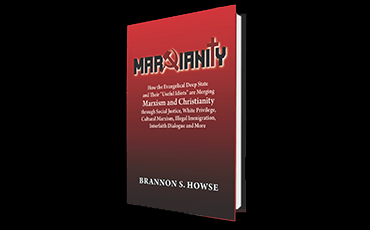1929 Parallels
1929 ParallelsBy Thomas E. BrewtonCentral banks are not so wise or powerful as most people assume them to be.The over expansion of credit fueled by the Federal Reserve between 1922 and 1927 had many parallels to the "irrational exuberance" of financial markets since the beginning of the Clinton administrations.In the Wall Street Journal's September 21 edition, reporter Brian Blackstone writes:"Federal Reserve governor Kevin Warsh on Friday cautioned against assuming that the Fed will prop up asset prices or protect individual financial institutions..."In "Economics and the Public Welfare," a book that cannot be too highly recommended, Benjamin M. Anderson described a similar situation confronting the Federal Reserve in 1926.Mr. Anderson's assessment is authoritative, because he was chief economist for the Chase National Bank, then one of the world's largest, from 1920 to 1937. During that period he was in close contact with major bankers in the United States and central bankers around the world, as well as being closely involved with Chase's large corporate clients.In contrast to the 1922-27 period, "The great crisis of 1920-21," he wrote, "was primarily a crisis of commerce and industry, and in the course of the crisis customers who needed loans were able to supply the banks with paper which was eligible for rediscount at Federal Reserve banks."Eligible paper then was based on self-liquidating, short-term transactions, representing sales of products to creditworthy customers who could be expected to pay for the goods, usually within 90 days.As the Great Crash of 1929 approached, Mr. Anderson observed, "The next crisis, however, seemed more likely to come in installment finance, in real estate, and, above all, in stocks and bonds. And none of these could supply paper eligible for rediscount at the Federal Reserve Banks."Today, as in 1927-29, financial institutions are clogged with illiquid, long-term assets, this time subprime mortgage loans and complex derivative securities that are several generations removed from any underlying merchandise transactions.Continuing the quotation from Federal Reserve governor Kevin Warsh:"Recent problems in financial markets were caused by "complacency" in valuing assets, and not solely by problems in the subprime mortgage sector, Mr. Warsh also said...Mr. Warsh traced the market's complacency to the perception that economic conditions were so "benign" and financial markets "robust" that investors "tended to act with confidence greater than warranted by the fundamentals."Again Mr. Anderson's analysis of the 1922-27 period provides disquieting parallels:"Bank credit expansion had moved far in the United States between June 30, 1922, and June 30, 1927...Unneeded by commerce, the rapidly expanding bank credit went into capital uses and speculative uses. It went into real estate mortgage loans on a great scale...There was, moreover, a great increase in installment finance paper...The terms and conditions were relaxing. Maturities were stretching from twelve to eighteen months, and finance companies were multiplying...The most startling increase, however, in the assets of the banks was in bank investments in bonds and in commercial loans against stocks and bonds...Stock prices were already high in the summer of 1927...There was a growing belief that stocks, though high, were going much higher. There was an increasing readiness to use cheap money in stock speculation...Moving concomitantly with the bank expansion and the rising stock prices was a great increase in new security issues."Today's parallels are the gross expansion of subprime mortgage loans and so-called home equity, second mortgage, home loans, along with rampant growth of take-overs by private equity funds, based largely upon the abundant availability of cheap loans.One difference between today's situation and the 1920s over expansion, both fueled by the Federal Reserve's excessive expansion of the money supply, is that in the 1920s our banks were lending heavily to overseas banks to provide credit for our booming exports of farm products and machinery to rebuild Europe after the First World War. By 1927, blocked by our high tariffs, foreign exporters could no longer sell enough product to the United States to generate sufficient dollars to repay their loans from American banks and investors.Today, the Federal Reserve finances burgeoning imports from overseas via inflationary expansion of the money supply. Central banks everywhere are awash in dollar-based assets. Many of them are beginning to diversify their foreign exchange reserves into other currencies and into new classes of assets. OPEC countries are making noises about no longer being willing to price oil exports in dollars, because our currency is depreciating so rapidly against the Euro, Japanese Yen, and other major currencies.Mr. Anderson's concluding observation on the Federal Reserve's over- expansion of the money supply from 1922 to 1927 was:"We could prolong it for a time by further bank expansion and further cheap money policies, but only at the cost of creating a desperately difficult situation at a later time."Thomas E. Brewton is a staff writer for the New Media Alliance, Inc. The New Media Alliance is a non-profit (501c3) national coalition of writers, journalists and grass-roots media outlets.His weblog is THE VIEW FROM 1776http://www.thomasbrewton.com/
Support Our Broadcast Network
Trending Stories
Latest
We're a 100% Listener Supported Network
3 Simple Ways to Support WVW Foundation
Make Monthly Donations
-or-
A One-Time Donation
-
Mail In Your Donation
Worldview Weekend Foundation
PO BOX 1690
Collierville, TN, 38027 USA -
Donate by Phone
901-825-0652
















